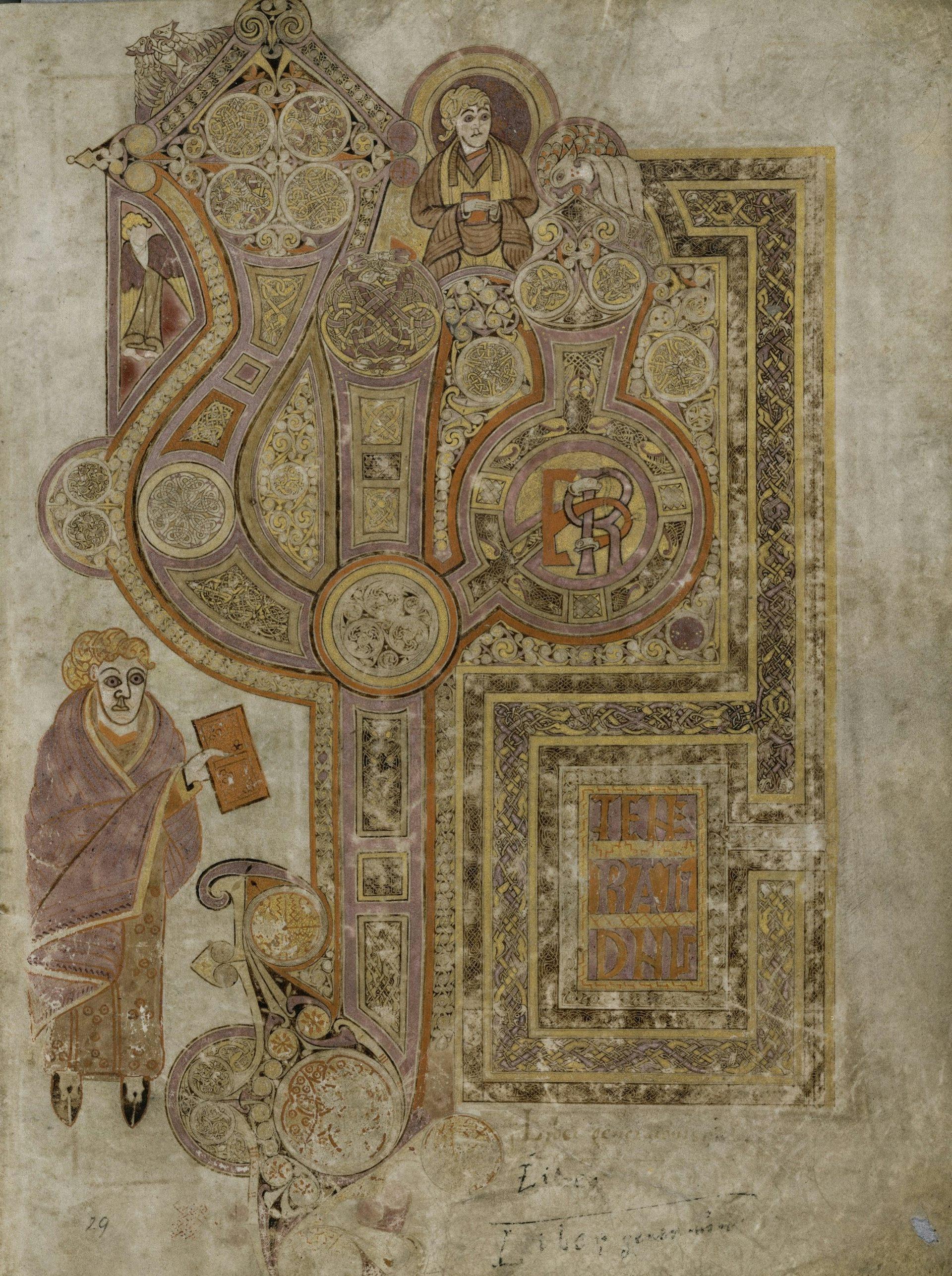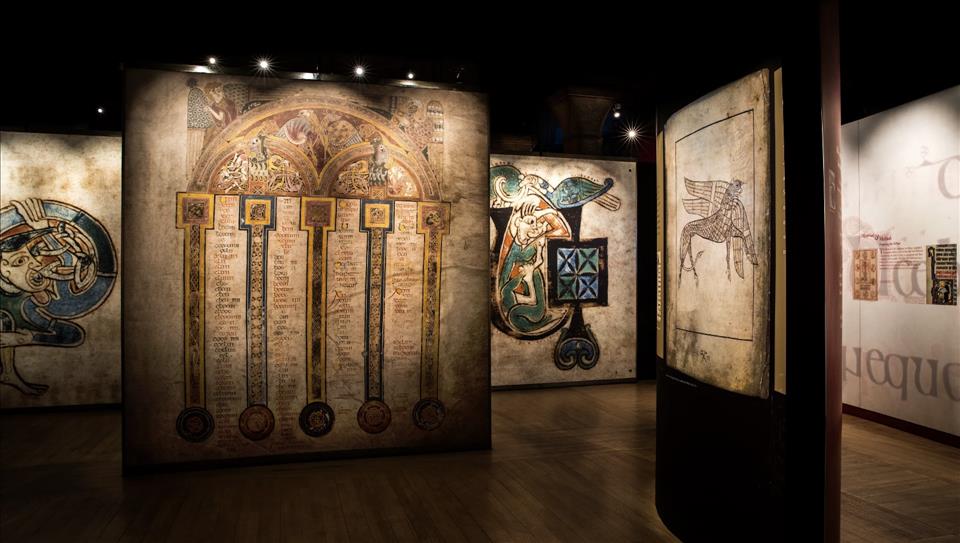
Book Of Kells: Exploring The Evidence That Points To Pictish Origins In North-East Scotland
By this time, the unique and intricate designs of the approximately 1,200-year-old manuscript were instantly recognisable, having been replicated on everything from embroidered clothing to tea sets coveted by nationalists and the Irish diaspora alike. These designs were deemed symbolic of“pure” Irish visual identity, created before the coming of the Vikings and the Anglo-Normans to Irish shores.
For well over a century, debate has raged as to whether the manuscript was made at Iona on the west coast of Scotland, the northern English monastery of Lindisfarne or indeed a different Columban monastery in Ireland. Now, a new contribution to the debate, The Book of Kells Unlocking the Enigma , soon to be published by archaeologist and art historian Victoria Whitworth, adds further food for thought on the topic.
The manuscript known as the Book of Kells was first referred to as such by the great biblical scholar Bishop James Ussher (1581-1656) to distinguish between two“gospel books of [St] Columcill”, one kept at Kells, county Meath, the other at Durrow in county Offaly.
Land charters transcribed on to the pages of the Kells manuscript prove that it had been there since at least the 11th century, and is therefore likely to be the same“great gospel book of Columcille” recorded as having been stolen and subsequently recovered from the same monastery in 1007.
Although nobody knows exactly when it was made, art historians and paleographers (experts in handwriting and manuscripts) agree that the Book of Kells most likely dates to the late 8th century. And therein lies a problem. The monastery at Kells was not founded until 807, when monks fleeing Viking incursions on the Scottish Hebridean island of Iona were gifted a safer inland site in Ireland to establish a new, ultimately thriving, monastery. So, while we know the manuscript spent at least 650 years at Kells, we do not know where it started its life.
Uncovering new evidenceBetween 1994 and 2007, an archaeological excavation at the Pictish monastic site of Portmahomack, Easter Ross in the north-east of Scotland revealed the first-known evidence for the widescale manufacture of parchment in northern Europe.
This was particularly surprising, as no surviving manuscript has previously been identified as coming from this area. In addition to this, Whitworth has identified Pictish stones carved with designs and writing like that found in the Book of Kells. So, does this mean that the most purely Irish thing we have is actually Pictish?
The manuscript was made at a time when Irish churchmen and scholars not only travelled extensively but welcomed people from across Europe to study in its schools. Books also circulated widely at this time, whether as working texts, diplomatic gifts or exemplars distributed to scriptoria (monastery rooms where manuscripts were copied) across Europe.

A detail from a folio from the Book of Kells. Courtesy of The Board of Trinity College Dublin
This cultural mix is evident in the significant range of artistic sources drawn on by the Book of Kells artists. Clearly they had access to designs from contemporary continental gospels, Irish fine metalwork, Byzantine icons and imagery found on Pictish stones. None of the scribes or artists recorded their names, and indeed we don't even know how many there were, such is the relative consistency of the script.
Non-invasive pigment analysis of the manuscript some years ago revealed the use of pigments typical to manuscript production in Scotland and Ireland during the period, some cleverly blended in such a way as to mimic the precious gold and lapis lazuli that lay beyond their reach.
An estimated 159 calf skins were used to make its surviving pages, some of which were of very poor quality. What we don't know is whether these animals were reared and processed close to the scriptorium where the manuscript was made, whether they might have been collected up from across the territory of a wealthy donor, or whether they were brought in from a single specialist“processor”, as for example, at Portmahamock. Ultimately, advances in non-invasive DNA testing may provide scientific answers to these questions and reveal much regarding the economy of the period.
While at present it is impossible to prove beyond doubt, Whitworth's book highlights an important new potential provenance for the Book of Kells. However, it also serves as a timely reminder that our preoccupation with the“nationality” of the manuscript is based on a 19th-century construct, which can distract from other considerations.
Whether based in Pictland, Iona or Ireland, its makers may have come together from a variety of locations, and they certainly had an international outlook. As such, this new research is equally important in considering how these people went about creating an object without borders. In this they were successful, as in 1007 it was deemed“chief relic of the Western World” and two centuries later as“the Work of Angels”.
This article features references to books that have been included for editorial reasons, and may contain links to bookshop; if you click on one of the links and go on to buy something from this website The Conversation UK may earn a commission.
Looking for something good? Cut through the noise with a carefully curated selection of the latest releases, live events and exhibitions, straight to your inbox every fortnight, on Fridays. Sign up here .

Legal Disclaimer:
MENAFN provides the
information “as is” without warranty of any kind. We do not accept
any responsibility or liability for the accuracy, content, images,
videos, licenses, completeness, legality, or reliability of the information
contained in this article. If you have any complaints or copyright
issues related to this article, kindly contact the provider above.

















Comments
No comment